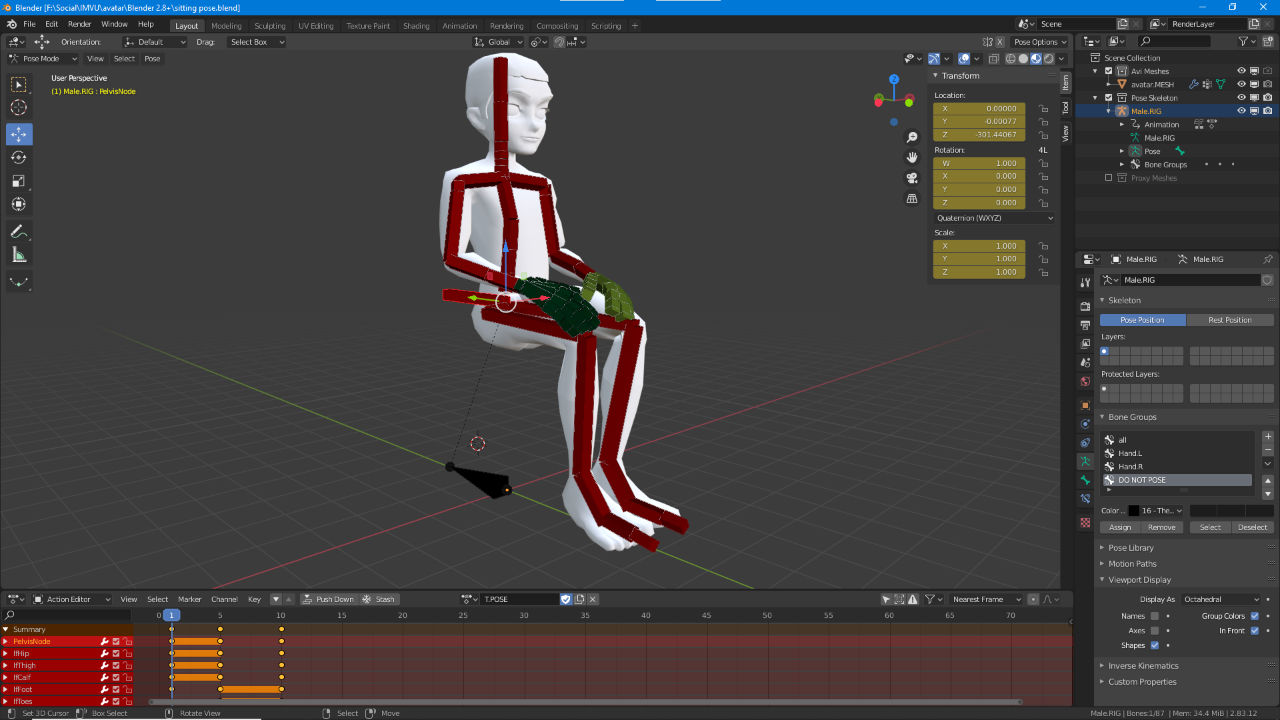Make a Sitting Pose
Table of Contents
Description
In this exercise we take a look at using the Starter File for Poses to make a simple sitting or seated pose. As all poses start from the standing position the key to seated poses is to lower, rotate or change PelvisNode not Female03MasterRoot, which must remain in situ and untouched at all times. Once done, what is now a keyframe can be duplicated to ‘prep’ the sequence for FBX export and import into IMVU where an action is assembled using stance.Sitting or stance.Idle as the trigger.
Duration c. 15 mins (15:00).
Info: 1080p | c. 95 MB.
Source: KatsBits – Sitting Pose (zip c. 600 KB – *.fbx, *.blend).
Product ID: Simple Sitting Pose – PID 53748926.
Download: Standard & Alternative Pose Starter Files.
Design note: when manipulating bones to pose the avatar skeleton Blender automatically places an orange keyframe marker into the Action Editor timeline indicating the appropriate coordinate data is saved. Confirm this moving the timeline scrubber – blue widget highlighting the active frame – to see if the pose resets back to the defaults (T Pose), if it does use the Editor Type selector [1] to temporarily switch to the Timeline where Auto Keying (auto-insert) can be enabled [3] and Keying [4] options set, Active Keying Set to RotLoc in particular [5] (Location and Rotation data). Select the Dope Sheet editor from the same Editor Type list when done (and ensure Action Editor for the context is set).
The auto-insert controls are accessible from the main Timeline – click the Editor Type [1] menu and select Timeline [2] from the Animation list…
… this switches the area where Auto Keying can be enabled [3] and various Keying [4] options set, in particular LocRot as the Active Keying Set [5] (type of positional data saved).When copy/pasting pose data at least one bone typically needs to be the ‘active’ object or a focal point of the selection. Blender indicates this by highlighting such objects with a brighter orange outline (this may be difficult to discern depending on the View used and/or whether bones are coloured in any way).
When making a selection at least one bone needs to be ‘active’ [6], i.e. the focus of the group, otherwise data may not be duplicated correctly.




